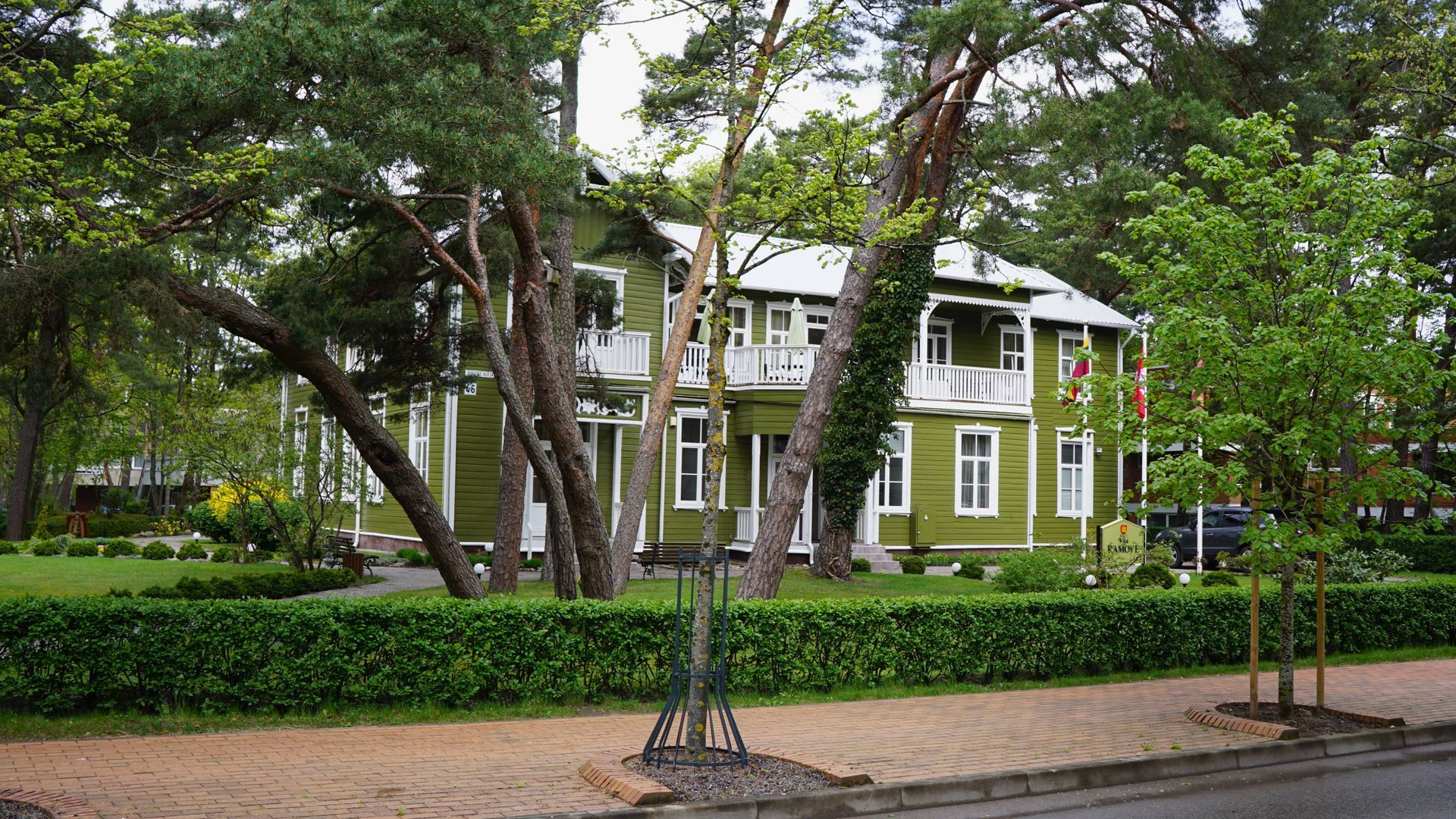
Lithuanian Garrison Officers’ Club Villa
1
Photo
© Audrius Mielkus
1
1 people was here
0 reviews
During the period of the First Independent Republic of Lithuania, Lithuanian military officers chose a building with exceptional architecture in Kaunas, on A. Mickevičiaus Street. Before the end of its construction in 1934, it was decided that officers needed quality rest at the Lithuanian seaside, and so a 1,633 square-metre plot of land with a holiday house in Palanga was acquired by the organization set up by Lithuanian officers as the Lithuanian Garrison Officers’ Club. During the spring after its purchase, the holiday house was repaired, and 20 recreation rooms to accommodate 50 people were established inside.
As the building had a sign that said Villa Ramovė, the modern holiday house was already completely full by the summer of the same year. Officers and their families would pay less than the market price for their rest in this villa, whose architecture matched the private holiday houses in Palanga. The plan was to expand the building and establish a canteen, but all financial resources were allocated for the construction of the garrison officers’ club in Kaunas.
During 1939 and 1940 the garrison officers’ club was attended by famous people including Dr Jonas Šliūpas (the long-time Burgomaster of Palanga) and Jurgis Lėbartas (a well-known figure in the Klaipėda region and the publisher of the newspaper Apžvalga (Overview)). Even Martynas Jankus (another well-known figure in Lithuania Minor and the leader of the Klaipėda Revolt), who was protected by the garrison officers’ club, used to spend his summers here. The Commander of the Lithuanian Armed Forces, the General, politician and Minister of National Defence of the Republic of Lithuania, Stasys Raštikis, also stayed at Villa Ramovė many times. In the autumn of 1939, imprisoned Polish officers inhabited the villa, and soon after the holiday house and its land were taken over by the Soviet army. Until the restoration of independence, the building served as the holiday home Neringa and the sanatorium Jūratė.
In 1993, the building was returned to the Ministry of National Defence, where Palanga Garrison Officers’ Club was established. In 2013, the building was included in the Register of Immovable Cultural Valuables of the Republic of Lithuania. At the moment, it’s a branch of the Garrison Officers’ Club of Klaipėda Company, and is a favourite of officers and their families, just like it was during the interwar period. Various events organised by the Lithuanian Army, veterans’ meetings and conferences take place in the villa, which is now painted green and decorated with ethnic motifs but that still retains its laconic forms. Soldiers taking part in military exercises can temporarily stay in the building.
Loading...
Loading...
©2025 trip.lt

